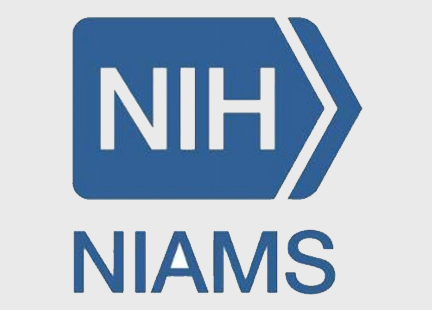
Spotlight on Research 2012
July 2012 (historical)
Genome-Wide Scan Reveals Mutation Associated with Melanoma
A team of international researchers supported by the National Institute of Arthritis and Musculoskeletal and Skin Diseases, the National Cancer Institute, and other funding organizations discovered a rare mutation in the microphthalmia-associated transcription factor (MITF) gene. The mutation was of interest because MITF regulates the function of melanocytes, the pigment-producing skin cells that, when they divide and grow uncontrollably, develop into melanoma. Also, MITF activity is known to be amplified in some types of melanoma. They reported their findings in a recent issue of Nature.
Prior to this study, only two classes of mutations in the genes CDKN2A and CDK4 were known as genetic risk factors for familial melanoma (melanoma that runs in families). These mutations are estimated to account for less than half of all cases linked to a family history. Hence, the team, including Kevin M. Brown, Ph.D., of the National Cancer Institute, and David E. Fisher, M.D., Ph.D., and Satoru Yokoyama, Ph.D., of Massachusetts General Hospital, Harvard Medical School, as well as other colleagues in the United States, Australia, and the United Kingdom, set out to see if a technology called whole genome sequencing would help them find other genetic risk factors for melanoma.
Whole genome sequencing is a laboratory analysis that can determine the entire DNA sequence of a person’s genetic material, or genome. It is a relatively new technology made more widely available to scientists recently through the advent of modern computing, which can process and store ever-larger amounts of data. To fully sequence just one person means handling the data on all 6 billion nucleotides in a human genome.
As part of this larger effort to discover genetic risk factors through whole genome sequencing, the research team found a mutation called E318K (named for its protein sequence) in the MITF gene of one melanoma patient from a family with seven other known melanoma patients. Three of these seven were also then found to have the mutation.
To test the significance of the mutation as a risk factor for melanoma, and to determine how widespread it is, the researchers looked for the mutation in groups of British and Australian melanoma patients known to have family histories of melanoma. They found the mutation in people from 31 different families. By testing their melanoma-affected relatives, the researchers learned that some, but not all, carried the E318K MITF mutation, which means it is considered to be an intermediate risk variant.
To see if this mutation might play a role in melanoma risk in the general population (the control group), rather than just within a group of families with a history of melanoma, the study authors looked at almost 4,000 individuals altogether, of whom 68 had the mutation, making it a relatively rare variant. The mutation was approximately twice as common among the melanoma cases as in a control group of people without melanoma, which means having it is a significant risk factor for the general population.
Overall, the researchers established that the E318K MITF mutation predisposes people to develop melanoma, and they demonstrated the utility of using whole genome sequencing to identify rare genetic mutations linked to diseases. By learning more about how the E318K MITF mutation affects the way melanocyte activity is altered, the researchers also hope to identify future targets for new therapies.
The mission of the National Institute of Arthritis and Musculoskeletal and Skin Diseases (NIAMS), a part of the U.S. Department of Health and Human Services’ National Institutes of Health (NIH), is to support research into the causes, treatment, and prevention of arthritis and musculoskeletal and skin diseases; the training of basic and clinical scientists to carry out this research; and the dissemination of information on research progress in these diseases. For more information about the NIAMS, call the information clearinghouse at (301) 495-4484 or (877) 22-NIAMS (free call) or visit the NIAMS website at https://www.niams.nih.gov.
###
Yokoyama S, Woods SL, Boyle GM, Aoude LG, MacGregor S, Zismann V, Gartside M, Cust AE, Haq R, Harland M, Taylor JC, Duffy DL, Holohan K, Dutton-Regester K, Palmer JM, Bonazzi V, Stark MS, Symmons J, Law MH, Schmidt C, Lanagan C, O'Connor L, Holland EA, Schmid H, Maskiell JA, Jetann J, Ferguson M, Jenkins MA, Kefford RF, Giles GG, Armstrong BK, Aitken JF, Hopper JL, Whiteman DC, Pharoah PD, Easton DF, Dunning AM, Newton-Bishop JA, Montgomery GW, Martin NG, Mann GJ, Bishop DT, Tsao H, Trent JM, Fisher DE, Hayward NK, Brown KM. A novel recurrent mutation in MITF predisposes to familial and sporadic melanoma. Nature. 2011 Nov 13;480(7375):99-103. doi: 10.1038/nature10630.
